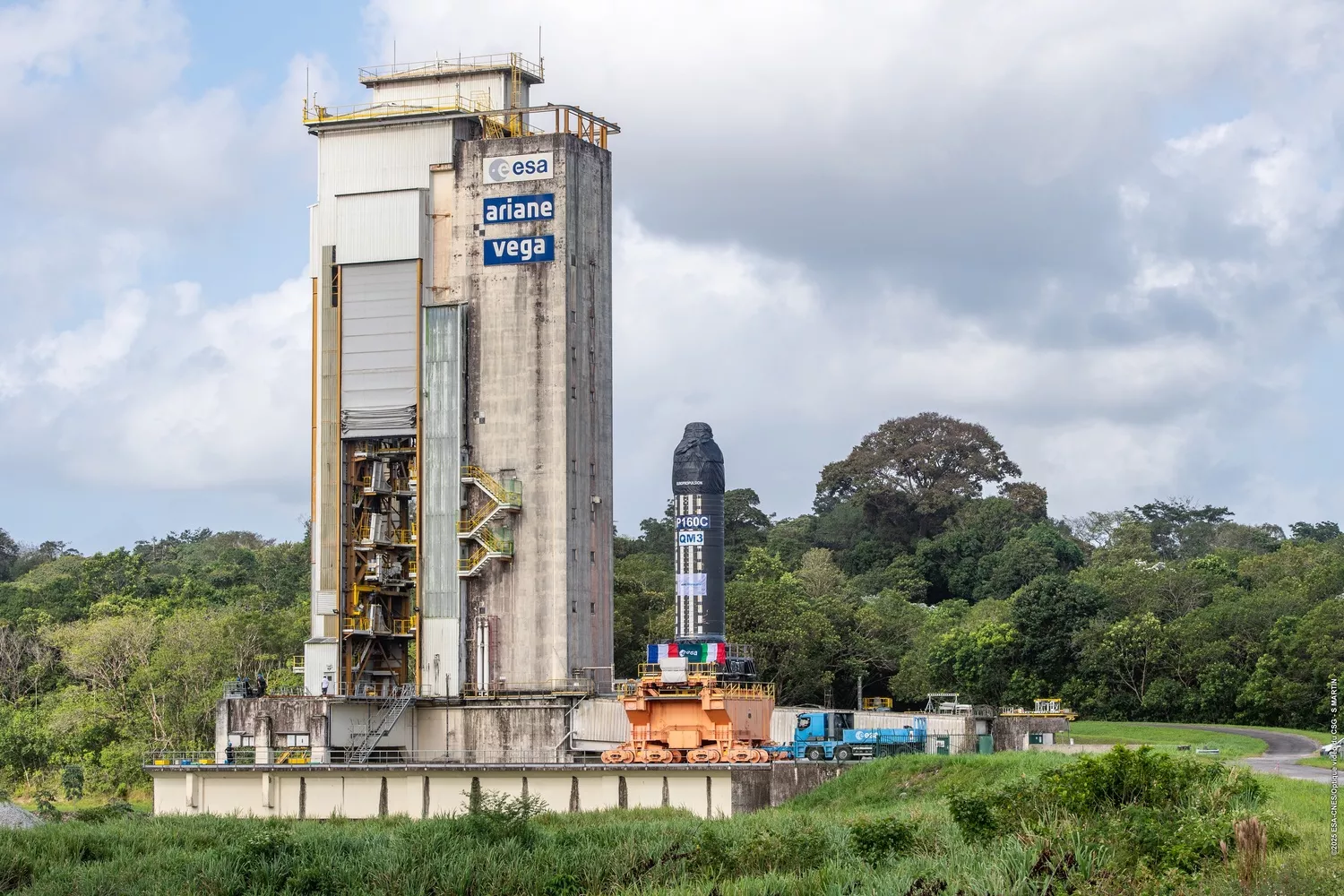New P160C motor all set for its hot-fire test
The hot-fire test of the new P160C motor, intended for Ariane 6, Vega-C, and Vega-E, is scheduled for 24 April between noon and 4 p.m. It will be conducted at Europe’s Spaceport on the solid booster test bench (BEAP).
Aim of the hot-fire test
Conducted by the CNES, this test consists of igniting a qualification model of the P160C for 2 minutes and 20 seconds. Measurements collected using sensors installed on the thruster and the bench itself will be analysed and compared with expected parameters to validate the motor’s behaviour, particularly its thrust. Tests are conducted vertically on the BEAP to reproduce a configuration close to that of take-off.

Role of the BEAP
Designed and operated by the CNES since 1991, the objective of this test bench is to qualify solid propellant motors under development for future launchers, or to contribute to technological monitoring programmes. Thus, the proper functioning of these critical components can be ensured before they are used in flight.
These tests are essential for validating the boosters’ design, materials and production techniques, ensuring their performance and reliability, and contributing to the continuous improvement of solid propulsion technologies across Europe.
Since its commissioning in the early 1990s, the BEAP has undergone several upgrades to keep up with the development of increasingly larger and more sophisticated solid propellant boosters.
The first hot-fire test, B1, was conducted on 16 February 1993, contributing to the qualification of the Ariane 5 rocket motors. The most recent test took place in 2020 on the P120C motor, which currently powers the Ariane 6 and Vega-C launchers. The hot-fire test of the P160C will be the 19th test conducted on the BEAP.
Environmental impact management
As with any launch, a hot-fire test on the BEAP is subject to meteorological parameters that may cause the test to be postponed: wind speed and direction at ground level and at altitude, and precipitation.
Taking these very strict meteorological constraints into account helps limit the dispersion of pollutants into the environment.
For each test or launch, the CNES implements a plan to measure the quality of air, water, and flora and fauna to assess its environmental impact. About thirty fixed and mobile sensors are deployed for the duration of the test around the BEAP and as far away as the municipalities of Kourou and Sinnamary.
Measurements taken during previous launches have shown that the environmental impact, linked to combustion gases, is localised around the test bench. The results can be viewed here.
The P160C motor in brief
Developed by Arianegroup and Avio for their Europropulsion joint venture, the P160C is an upgrade of the P120C motor currently powering the European Ariane 6 and Vega-C launchers.
The P160C is one of the largest single-unit carbon fibre solid rocket boosters in the world. It contains 157 metric tonnes of propellant. One metre longer and more powerful than its predecessor, it will equip the Ariane 6 boosters as well as the first stage of Vega-C and Vega-E.